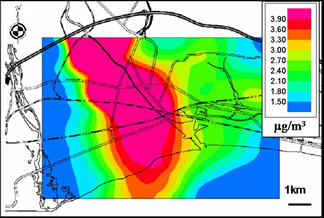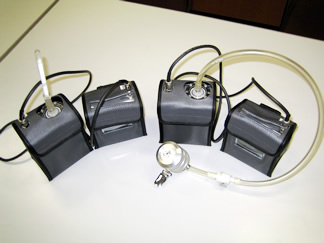Atmospheric Environment

- account_circleTakashi AmagaiPhD, Prof.
- account_circleKazushi NoroPhD, Research Asst. Prof.
- Website:https://dfns.u-shizuoka-ken.ac.jp/labs/atmos/
- Mail:
- Phone:+81-54-264-5798
Development of analytical methods and risk assessment for hazardous air pollutants.
Emission, dynamics, environmental fate, and exposure of hazardous air pollutants.
- 1. Development of analytical methods and risk assessment for hazardous air pollutants.
Polycyclic Aromatic Hydrocarbons (PAHs) are typical carcinogens and/or mutagens in the air. Some halogenated or nitro PAHs are also carcinogens or mutagens. We have developed highly sensitive and selective analytical methods for PAHs using HPLC/spectrofluorometry or GC/MS.
- 2. Indoor pollution.
Since we spend most of our time indoors, indoor air quality is important for our health. Recently, indoor air pollutants have been detected in high concentrations. We have developed simple sampling methods including passive sampler and analytical methods for indoor pollutants. We have also surveyed indoor air pollution in more than 200 houses. Emission sources have been identified for these pollutants.
- 3. Exposure assessments for hazardous compounds.
Exposure assessment is a step of risk assessment. It involves estimating the number and characteristics of persons exposed to a hazard at various intensities and durations. We have developed exposure assessment methods for hazardous compounds. Passive samplers have some advantages in the determination of personal inhalation exposure.
- Figure 1
- Spatial distribution of benzene, carcinogen, in the Fuji city.

- Figure 2
- Ultra low noise sampler for personal exposure of PM2.5 and PAHs.
